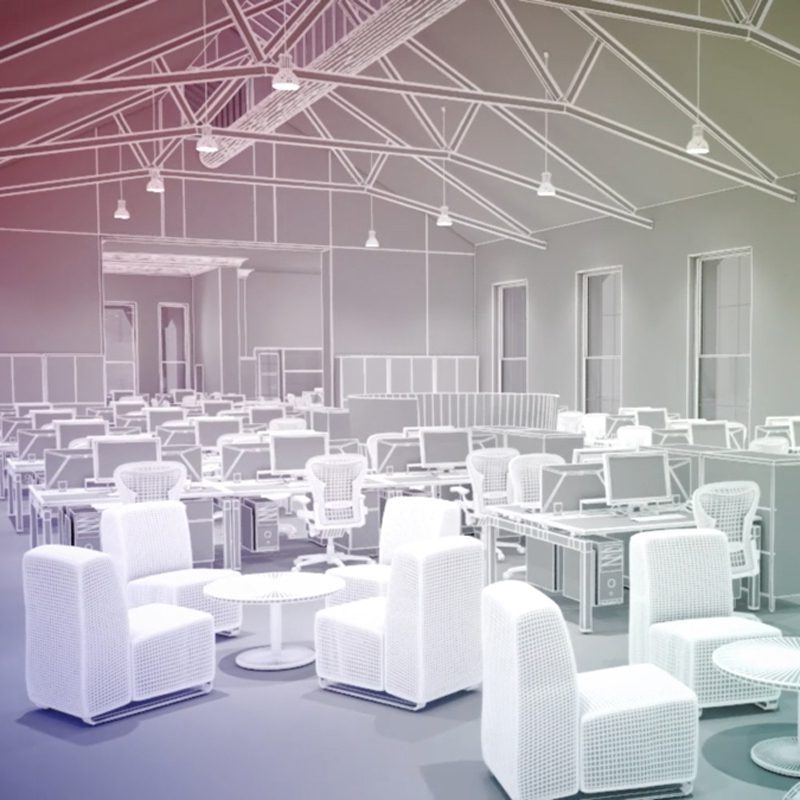The Concrete Centre discusses concrete’s past, present and future with Rab Bennetts, founding director of Bennetts Associates
In association with![]()
*![]()
What attracts you to concrete as a material?
Bennetts Associates has always leaned toward structural expression in its work, whatever the material. Concrete’s innate ability to shape spaces, services and even whole buildings makes it an attractive proposition.
Powergen Headquarters, Coventry
On which project did you first explore concrete construction, and what specific aspects did you examine?
We have always built with concrete, but the first opportunity to really explore the material came with the Powergen Headquarters building in Coventry (1994). Responding to the client brief for high levels of energy efficiency, we employed thermal mass through an exposed and expressive concrete structure.
This was a relatively new and innovative approach at the time, resulting in temperature-stable, naturally-ventilated working spaces. For reasons of thermal performance, we chose vaults rather than slabs for the ceilings to maximise the surface area and mass of the concrete. The structure-led concept works well not just environmentally, but also in terms of acoustics, partitioning and aesthetics.
Powergen Headquarters, Coventry
How has the practice’s use of concrete evolved over the last 30 years?
Back in the 1980s and early 90s there was strong public feeling against modern architecture, and in particular concrete buildings. For some time, the practice’s approach was to paint its concrete structures white, making them more visually forgiving – especially if the formwork was less than perfect – and improving light reflectance.
Over the years, we have become more confident and knowledgeable in our use of raw concrete – aided in part by a new generation of clients that supports both the material and modern design. A good example is the Royal College of Pathologists in London (2019), which makes extensive use of exposed in situ concrete. The detailing, colour choices and finishes employed throughout the building are designed to heighten the material’s expressive nature.
From a technical and environmental standpoint, the practice has spent a lot of time developing ‘leaner’ structures, where less concrete is used to achieve the same amount of thermal mass. The Wessex Water Operations Centre (2001) is perhaps our lightest concrete building to date.
Royal College of Pathologists, London
In terms of concrete innovations, what do you think will be making the biggest difference in 30-years time?
Climate change means that we have to urgently find ways of making zero-carbon buildings, both in terms of their energy consumption and the materials from which they are made. The popularity and widespread use of concrete means that the concrete industry has a big responsibility to develop innovative carbon-neutral products. It is something that the practice is very much behind and will support in any way it can.
A technology that we are currently exploring is casting cooling/heating coils into concrete slabs – the aim being to accommodate peak temperature loads without recourse to energy-intensive air conditioning systems.
Wessex Water Operations Centre, Bath
The UK Concrete Industry Sustainable Construction Strategy recently celebrated its 10th year, writes The Concrete Centre. Data for concrete in the UK is already showing significant progress in carbon reduction as well as other sustainability metrics through changes in manufacture. There are numerous innovations being developed that could make major changes in the future, including carbon capture during manufacture for storage or use, alternative cements and other mix designs. The Concrete Centre provides guidance to help designers optimise the benefits of concrete and facilitate the steps they can take to lower the carbon footprint of buildings using concrete today.
Contact Details
For more information please see the Concrete Centre website, Twitter or email.
Click here to return to the AT30 homepage.














